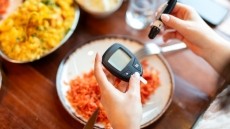Harvard’s helping hand for heart health foods
Guidelines in its Healthy Eating for a Healthy Heart, which is due to be updated later this year, say that four of the six major risk factors of heart disease – high blood pressure, high cholesterol, diabetes and obesity – are diet related.
In 2003, approximately 37 percent of American adults had two or more of these risk factors.
Cholesterol defense
While stressing that: “Your first line of defense against high LDL cholesterol is cutting back on saturated fat and trans fat in your diet,” the report suggests food fortified with plant sterols or stanols, which are naturally present in fruits, vegetables, seeds, nuts and cereals, also contribute.
It tells consumers: “Research shows that eating 2 grams of plant sterols or stanols daily can lower your LDL cholesterol by an average of 10 percent.”
Initially added into margarines, sterols and stanols are now also added to chocolate, granola bars, salad dressings and cooking oil. “If your cholesterol is slightly high, you might want to try eating plant sterols and stanols (or take them in capsule form) daily to control it,” says HMS, but warns consumers to use fortified foods in place of foods already in their diet, to avoid adding more calories.
Lowering blood pressure
Potassium, which is thought to help lower blood pressure largely via its ability to encourage the kidneys to excrete sodium, is another ingredient that needs to be encouraged, according to the paper.
The authors reveal that only 10 percent of men and 1 percent of women get the recommended 4.7 grams a day of potassium.
They list tomatoes, oranges, baked potatoes with skin, sweet potatoes, winter squash, spinach and lima beans alongside bananas as good sources. They add: “Unless your doctor recommends supplements, stick to food sources, which can give you potassium as well as other healthy nutrients.”
“Consuming plenty of calcium-rich foods and beverages appears to help prevent high blood pressure,” says the report, listing low- or nonfat yogurt, cheese, and milk, as well as salmon, broccoli, tofu, and legumes as good sources. However it points out that “experts aren’t sure if calcium supplements are as effective as food sources.”
Standard daily amounts of B6, B12, and folic acid, found in fruits and green, leafy vegetables may lower the risk of heart disease, say the authors, although they refer to clinical trials in which high doses of the three B’s effectively lowered homocysteine but not the incidence of heart attack and stroke.
The report stresses the value of these ingredients alongside the core “building blocks” of whole grains, healthy unsaturated fats, plenty of vegetables and fruits, and healthy proteins, such as fish, poultry, beans, and nuts.
What to avoid
Salt not unexpectedly heads the guidlelines’ list of ingredients to avoid. Americans need just 1,000 milligrams of sodium a day, but most get about 15 times that amount by eating foods loaded with salt, the report says, while warning of the “hidden ingredient” in prepared foods such as soups, cereals, cheese, and deli meats which contribute 75 percent of the salt in the average diet.
It quotes USDA figures which show that a four-ounce slice of frozen cheese pizza can have up to 10 times the sodium content of a one ounce serving of potato chips.













